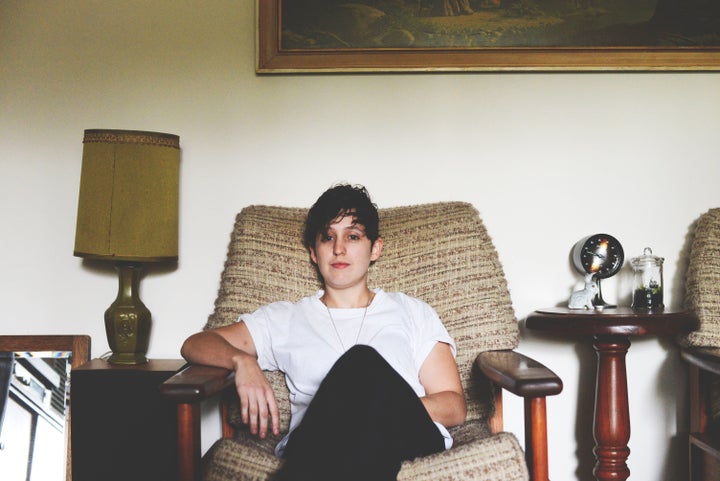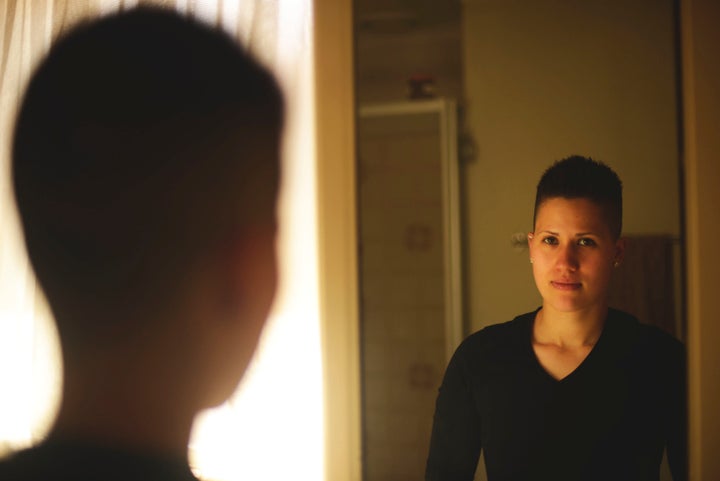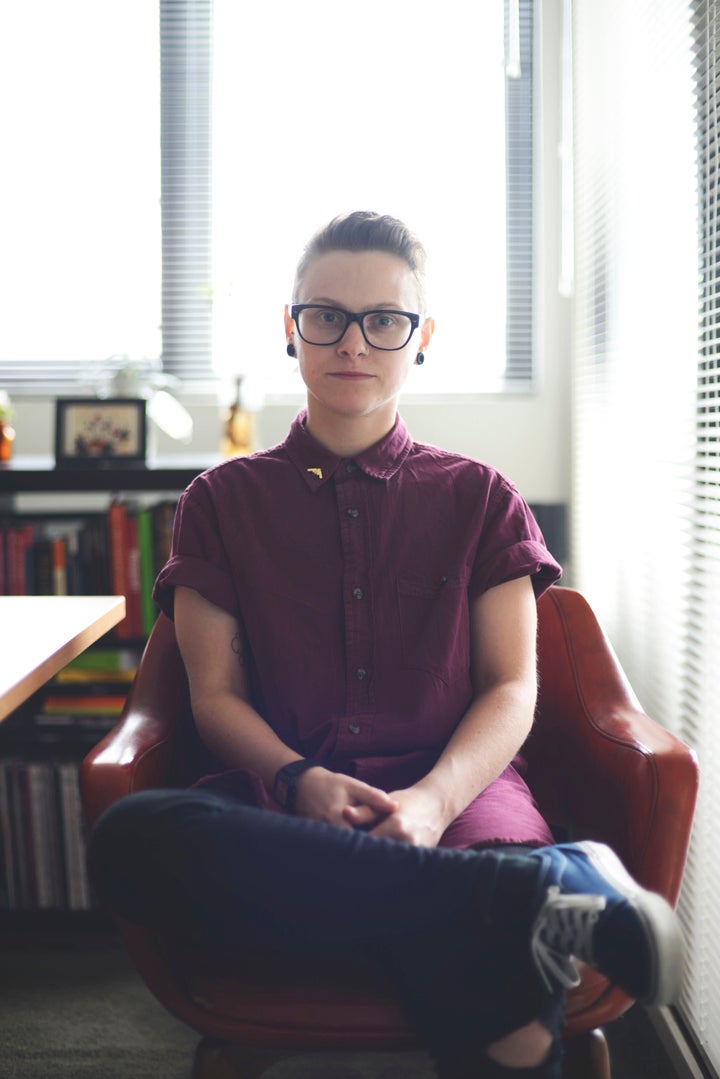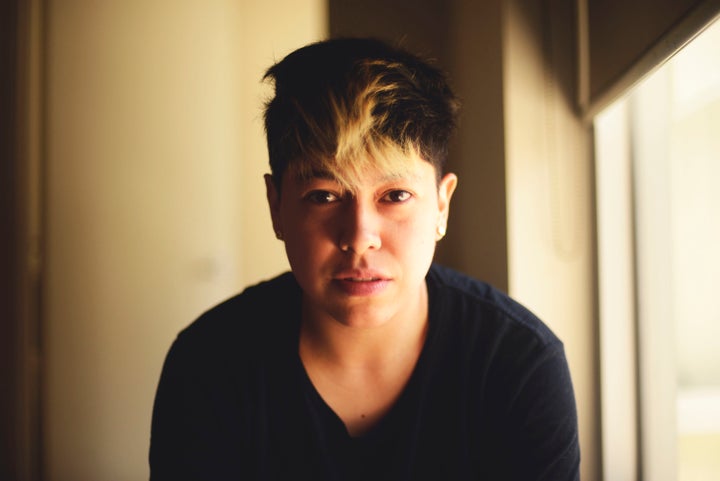A powerful new project is bringing the images and stories of butch and masculine-of-center queer women into mainstream conversation.
Butch Is Not A Dirty Word is an anthology of essays, stories and photography curated by Esther Godoy, who, for over two decades, had little to no positive experiences of relating to the queer community until she moved from Australia to Portland, Oregon, at age 23.

“This project spawned from many a frustration I experienced during my coming of age as a queer butch woman,” Godoy told The Huffington Post. “As a more masculine-presenting female, the narrative of my entire life has been ‘other,’ ‘weird,’ ‘unattractive’ and ‘different,’ ― both before AND after I had realized I was gay.”
Godoy laments the lack of visibility butch and masculine-of-center women receive from the media and entertainment industry. As a result, she decided to begin Butch Is Not A Dirty Word, initially as a photography project, with Georgia Smedley, inspired largely by Meg Allen’s highly successful “BUTCH.”
“In Portland, I and others like me were welcomed warmly and openly into many different queer spaces and communities,” Godoy said. “BINADW was born out of a desire to share this experience, as a way to open up this conversation in Australia, and to try and push for more visibility and acceptance amongst the queer community.”
The Huffington Post chatted with Godoy last week further about Butch Is Not A Dirty Word, what butch and masculine-of-center visibility looks like in 2016 and how we, as a community, can do better.

The Huffington Post: Where — if anywhere — in popular culture do you see positive representations of butches?
Esther Godoy: To my knowledge, literally no where, not only are there no positive representations in popular culture, there are hardly any less-than-positive ones either. In terms of very mainstream media, “Orange is the New Black” is the closest thing I’ve seen, and in this particular media context they are still being “othered” from society. I remember as a kid watching a movie with my family and there was reference to a dyke character on the show. Whilst I didn’t know exactly what a “dyke” was at that age, just via the movie’s narrative I learned that it was something “bad.” Slowly more lesbians are popping up in mainstream media, but almost every single negative portrayal of a lesbian in these contexts is targeted at the more masculine presenting ones.

In terms of visibility, has it gotten better or worse or stayed pretty consistent for butches?
In mainstream media there is no visibility. I mean even in queer media, I know we’re going back ten years here, but in a whole six seasons of “The L Word,” there was just one masculine-of-center lesbian character, a trans man, a drag king and then literally 50-100 feminine-presenting lesbians. And in the more recent “Lip Service,” we have even fewer masculine presenting lesbians! The main character, who is deemed to be the most masculine (and funnily enough the most promiscuous ― just like the L word) is more on the feminine presenting side with some tomboyish traits.
I think thats why Meg Allen’s BUTCH photography project has been so powerful. For the first time in my life, and many others, there is a catalogue of butches you can browse through, shown in their own personal environments. It shows butch as a myriad of different physical presentations and identities and this has been so special, and so life changing for so many.

Trans visibility — especially for binary trans people — has skyrocketed in recent years. This is obviously valuable and positive for greater understanding of the trans community but it could be argued that in some ways, it has been or could be problematic for those people who do not identify as trans but who do not adhere to traditional gender identities or understandings — like butches. What are your thoughts on this?
At the end of the day we are all one big family, and ANYTHING that is good for our wider community is good for us. The more healthy, happy and confident individuals we have as a part of our community the better! I think the trans and gender-fluid dialogue has been a long-time coming and I am so glad to finally see it taking off. I see all these wonderful and amazing things happening for our trans and gender\queer family, and I am truly so pleased.
In relation to BINADW I think we’re on a slightly different trajectory. All we’re trying to do over here at BINADW is add another conversation to the mix, and to make sure that anyone that falls under this umbrella has an opportunity to be seen and heard as well. Visibility is everything ― “you can’t be what you can’t see,” and we want to have strong and positive representations of butches and masculine-presenting females out there in the world, to ensure that the next generation have what they need to be able to move through life with a little more ease.

What do you want people to take away from this project?
The sole purpose of BINADW is to create community and visibility. Whilst queers of all physical presentations experience oppression in a myriad of different ways, BINADW is not here to discount the experiences of others, or to insinuate that they are of any less importance. We’re literally just here to do our little part in the conversation as a whole, to build positive spaces and to give people an opportunity to be seen and heard.
Want more info on Butch Is Not A Dirty Word? Head here and check out more photos from the project below.







